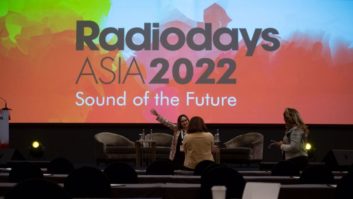LEXINGTON, Neb. When an engineer takes a new position, one of the items first on the employer’s mind is getting some longstanding issues taken care of quickly.
This was my experience when assuming the duties of director of engineering for the Nebraska Rural Radio Association.
First and foremost was the perceived loss of coverage with KRVN, our 50 kW AM. It sits in a beautiful 30 millimhos per meter ground conductivity area surrounded by areas of 15 millimhos per meter on three sides. The coverage had noticeably decreased over the years and the first “order” from the board of directors was to get our range back.
Diagnosing

All of the normal problems were checked by the engineering staff. Jim Liffrig, our AM supervisor, Ray Bitner, staff engineer, and Mark Voris, FM supervisor helped out as well.
Transmitter power was true and consistent. No problems were found in the array. Monitor points were normal and stable.
We contracted with Kevin Kidd from AM Ground Systems Co. to come in and do a thorough check of our ground system and plant. I felt that having an independent engineering firm audit our plant after an engineering management change was a prudent exercise for many reasons.
Kevin found nothing out of the ordinary except for our processing. Our processor was not keeping the audio at a consistent level between peaks, which was giving us an average modulation level of around 60 percent on some of our programming.
We serve the agricultural community of Nebraska and a large part of Kansas. Much of our programming is received by phone and the audio levels and quality on these phone calls can vary wildly.
The Nebraska Rural Radio Association’s mission is to give our 4,000+ listener/owners the information they need, when they need it.
One piece of information that they need is up-to-date livestock auction information. If there is a bit of noise, or a varying audio level on the phone line from the many sale barns that have us air their reports, that is okay, as long as the information is intelligible.
Many hours were spent trying to get the legacy processor to work correctly, all to no avail.
Kevin had suggested getting a “demo” processor in and trying it. Due to the age and checkered history of our existing unit, I contacted Gary Tibbots at Broadcasters General Store and asked if we could demo an Orban 9300 Optimod-AM. I had just installed one of these at my previous place of employment and was quite satisfied with it.
Gary was gracious enough to send us a new unit, which we installed within 24 hours.
We put it in the rack, powered it up and performed the “audio quick change.” We unplugged the audio cables from the old processor and immediately plugged them into the 9300. Without even setting the levels, the audio quality of our signal was absolutely astounding. Four sets of jaws dropping at once is quite a sight to see!
One thing we did not do was perform the primary level adjustments with the transmitter off, as the manual instructs you to do. This is not something I would recommend that anyone attempt. We were watching the modulation level and transmitter very closely when we performed the installation and just got lucky.
Setting up the 9300 was easy. It had been a while since I had done any adjustments to one so I and the rest of the engineering crew read the manuals before starting. They were plain to follow and made the initial installation simple.
We went through the steps in the manual and when we were done we were more than pleased with the results.
The cure
While discussing this article with Jim Liffrig, he said that setting up the 9300 was little more than adjusting levels, picking a preset and letting it run.
It does allow custom settings for those so inclined, but for our purposes the presets fit the bill perfectly. When we found a preset we thought would be the best for our situation, we left it alone so we, and others, could critically listen to it for the next few days. Usually having four engineers in a room and setting a processor is akin to heated political or religious debate, but in our case an easy and affable consensus was reached, and we drove home that night listening to our “new station.”
I called Gary at Broadcasters General Store the next day and told him to send us the bill, we were keeping it. We did make a few minor tweaks over the next few weeks, but for the most part the hard work was done in less than an hour.
Reports from listeners from all over the state proved that our signal was back to where it had been many years ago. The board of directors was extremely pleased with the outcome as well.
Fortunately I was able to attend this year’s NAB convention in Las Vegas and made a point of stopping at the Orban booth so that I could thank the folks there, especially Bob Orban himself. They have made many fine products over the years and I could not be happier with the 9300. They made the engineering department look awfully good to my new employers.
Rod Zeigler is director of engineering at Nebraska Rural Radio Association.
For information, contact Orban at (480) 403-8300 or visitwww.orban.com.












